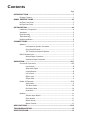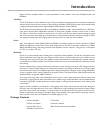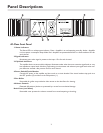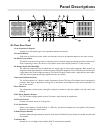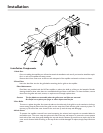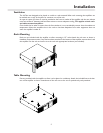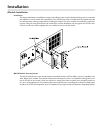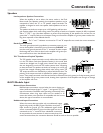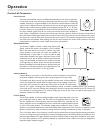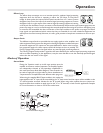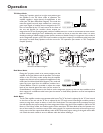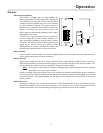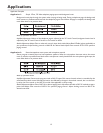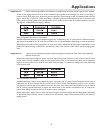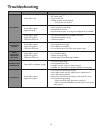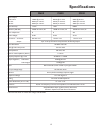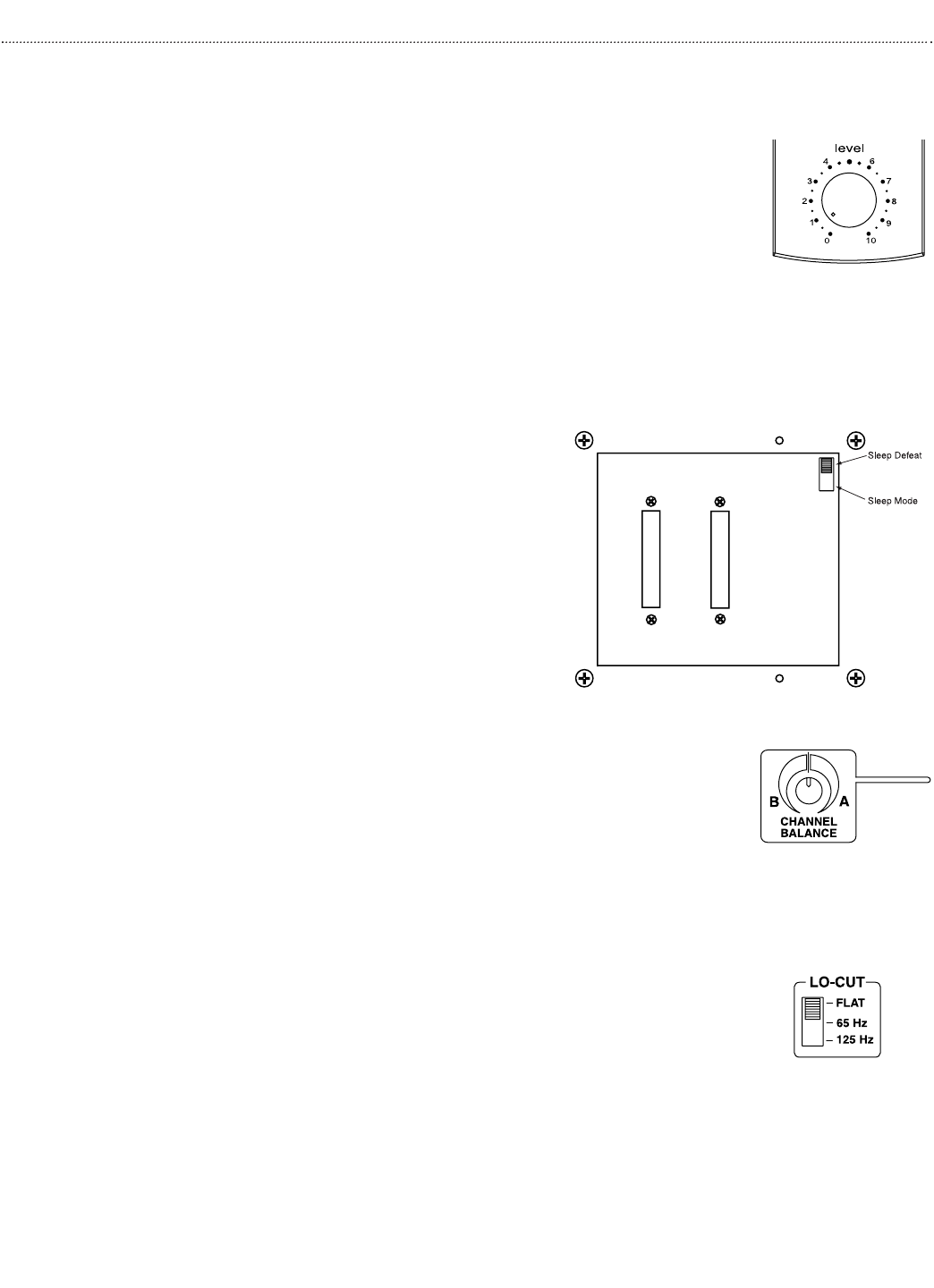
Operation
Controls & Connectors
Level Controls
The front-mounted level controls act differently depending on the mode of operation.
In the stereo mode, each level control determines the volume of the corresponding
amplifier channel as in a typical amplifier. In the 70V Mono and Dual Mono modes,the
controls have a different function and determine the mix of the signal levels from the
different input modules (input modules can be assigned to either the "A" or "B" chan-
nel by the jumpers on the module).The front level controls determine the mix of the
two input module signals.They do not control the volume level of each amplifier in
these modes. Essentially, the volume level of both amp channels is fixed at maximum and the overall level of
the mixed input module signals determine the output volume level.To increase the overall volume of the ampli-
fier output, turn up both front panel controls by the same amount.This increases the signal level of each mod-
ule's input into the amplifier while keeping the mix the same. Similarly, turn down both controls to the same
knob position to reduce the overall output volume from the amplifier.
Sleep Mode Defeat
The M-Class amplifier includes a sleep mode feature that
greatly reduces the power consumption of the amplifier
after it has been idle for more than 3 minutes. Any audio
activity present at the input will wake the amplifier up
instantaneously so that there is no loss of audio. A sleep
mode switch located in the upper right hand corner of the
module bay can be set to activate or deactivate this feature
using a thin, flat-bladed screwdriver. (If a module is inserted
in the right bay, turn off the power and remove the module
before proceeding.) If the sleep feature is desired,make sure
the switch is in the down position.If the sleep feature is not
desired, make sure the switch is in the up position.
Channel Balance
Channel Balance only works in the Dual Mono mode of operation. In Dual Mono
mode, both amplifier channels get the same audio program at the same level.
To provide some direct control over the amplifier volume levels, a Channel Balance
control is provided.This control allows the adjustment of one amplifier channel out-
put volume over the other.To reduce the volume level of channel "B" while leaving
channel "A’s" volume unchanged, the Channel Balance control is rotated counterclockwise. The diminishing
arrow with the "B" next to it indicates that rotating the control in that direction diminishes the "B" channel vol-
ume. Likewise for reducing channel "A" volume. Putting the control at the center of rotation allows equal, and
maximum, volume from both channels.
Lo-Cut Switch
The M-Class amplifier is a direct-coupled amplifier,which means that there are no out-
put transformers used to deliver the 70V audio to the speakers. Because of this, the
M-Class amplifier has a Flat frequency response below 20Hz.This extended low fre-
quency operation can be troublesome for some transformer-coupled speakers typical-
ly used in 70V audio systems. The relatively inexpensive transformers used in these
speakers cannot handle frequencies much below 60Hz.When frequencies lower than this are applied to these
speaker's transformers, they can saturate causing distortion and high instantaneous power consumption.
The Lo-Cut filter allows a low frequency roll-off to be introduced into the output signal preventing the speak-
ers from receiving too much low frequency content.The 65Hz position should be used for all transformer cou-
pled cone type speakers.The higher frequency roll-off of 125Hz provides an extra level of safety for horn speak-
ers. Some horn speakers can be adversely affected by frequencies below 120Hz since they are designed to
reproduce higher frequency signals.
8



